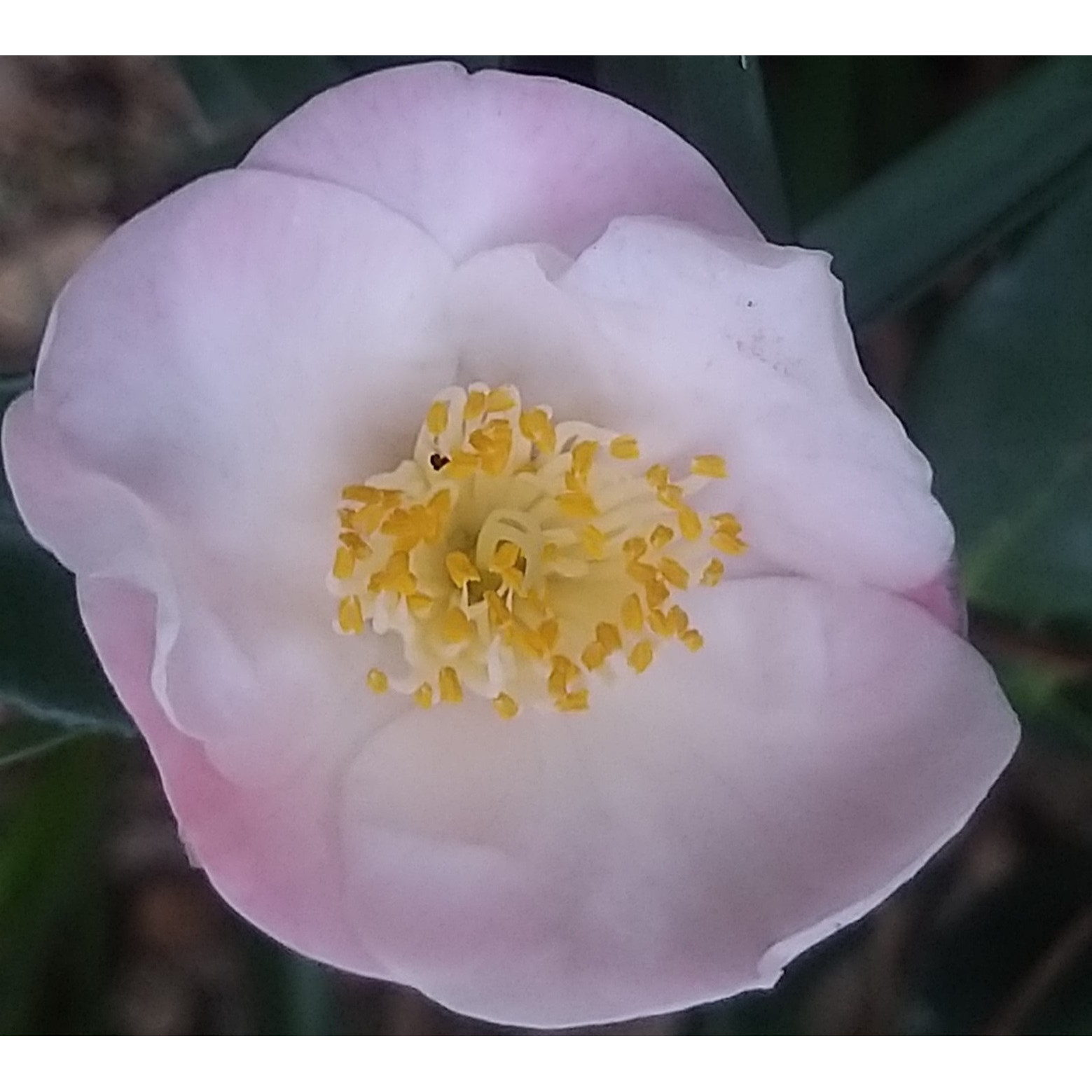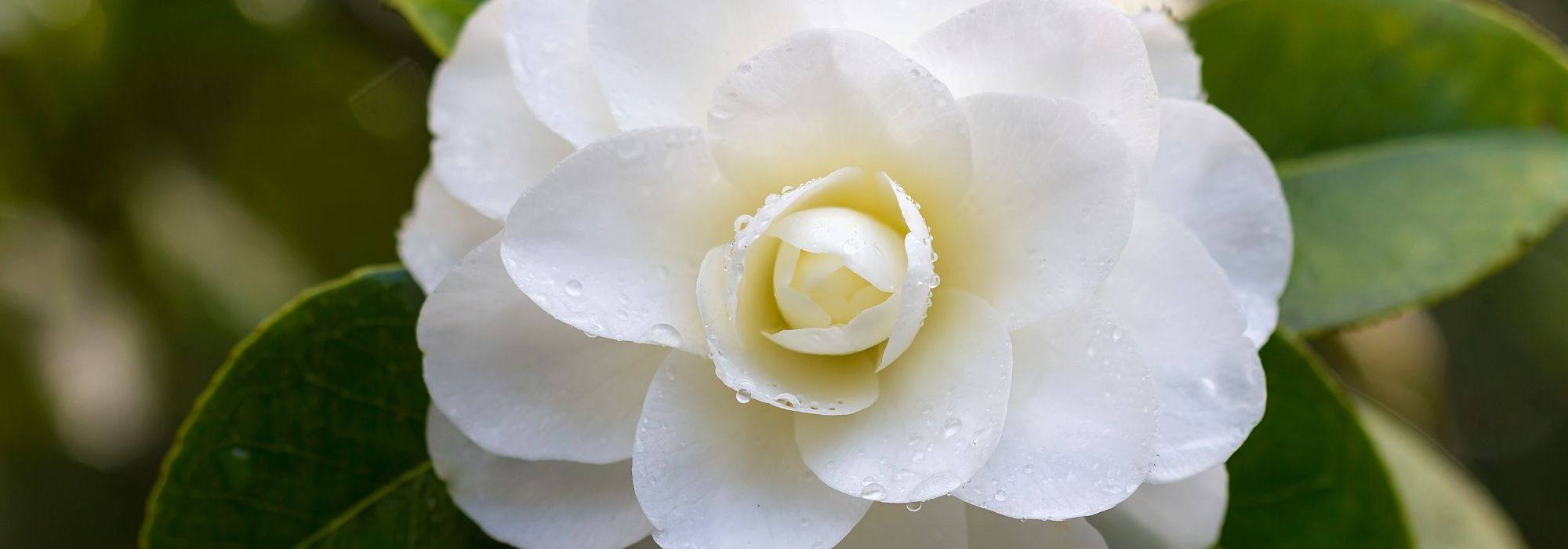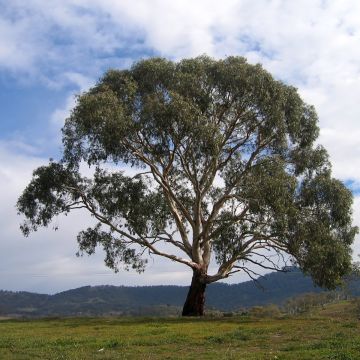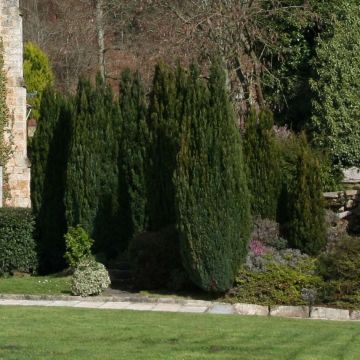

Wild Camellia - Camellia Cinnamon Scentsation


Wild Camellia - Camellia Cinnamon Scentsation


Wild Camellia - Camellia Cinnamon Scentsation
View more pictures
Hide images

Thierry P.

March flowering - image 12 - Focus on a flower (the fragrance is clearly noticeable).
Thierry P. • 84 FR

Thierry P.

No text to translate.
Thierry P. • 84 FR

Thierry P.

No text to translate.
Thierry P. • 84 FR

Thierry P.

March flowering - image 7
Thierry P. • 84 FR

Thierry P.

March flowering - image 8
Thierry P. • 84 FR

Thierry P.

N/A
Thierry P. • 84 FR

Thierry P.

March flowering - image 5
Thierry P. • 84 FR

Thierry P.

March flowering - image 2 - With its ant in search of provisions.
Thierry P. • 84 FR

Thierry P.

March flowering - image 1
Thierry P. • 84 FR
Wild Camellia - Camellia Cinnamon Scentsation
Camellia Cinnamon Scentsation
Japanese Camellia, Rose of winter
A wonderful blooming since February, I wrapped it up during the few days of frost. Delightful.
Isabelle, 16/03/2024
Special offer!
Receive a €20 voucher for any order over €90 (excluding delivery costs, credit notes, and plastic-free options)!
1- Add your favorite plants to your cart.
2- Once you have reached €90, confirm your order (you can even choose the delivery date!).
3- As soon as your order is shipped, you will receive an email containing your voucher code, valid for 3 months (90 days).
Your voucher is unique and can only be used once, for any order with a minimum value of €20, excluding delivery costs.
Can be combined with other current offers, non-divisible and non-refundable.
Home or relay delivery (depending on size and destination)
Schedule delivery date,
and select date in basket
This plant carries a 24 months recovery warranty
More information
We guarantee the quality of our plants for a full growing cycle, and will replace at our expense any plant that fails to recover under normal climatic and planting conditions.

Would this plant suit my garden?
Set up your Plantfit profile →
Description
Camellia 'Cinnamon Scentsation' is a very attractive variety of field camellia that stands out for its enchanting spicy fragrance of its simple flowers, which are cream-white shaded with pink and highlighted by a beautiful bouquet of golden stamens. They bloom from February-March to May, on a medium-sized bush with an open and elegant habit. Its beautiful foliage is full and fairly light green, remaining decorative in all seasons. 'Cinnamon Scentsation' will work wonders in a small flowering hedge or in a wooded garden, with a mild and humid climate. It also makes a very beautiful subject to grow in a pot on a terrace or balcony.
Derived from hybridisation work, field camellias belong to the family of Theaceae, just like the tea plant (Camellia sinensis). They are compact shrubs with evergreen foliage that flower from January to April, depending on the varieties. Less sophisticated than their close relative, the Japanese camellia, they easily find their place in a small hedge or in heathland beds. They are plants of an oceanic, mild and humid climate, and non-calcareous soils.
The cultivar 'Cinnamon Scentsation', discovered in the United States in 1995, is a spontaneous mutation of the field camellia 'Cinnamon Cindy'. It carries the genes of Camellia japonica 'Ken'yotai' and the botanical species Camellia lutchuensis. Its habit is free, dense but flexible, rather open, and its growth is moderately fast for a camellia. Within 10 years, it forms a bush 1.50 m (4.9 ft) tall and 1 m (3.3 ft) wide, sometimes more. This variety blooms from February-March to May. It produces medium-sized flowers, 7 cm (2.8 in) wide, with 5 petals, in the axils of the leaves, and all along the branches. The pink buds open into white-cream flowers washed with pink. The centre of the flower exposes numerous stamens with golden anthers. Their spicy and sweet fragrance is smooth and particularly pronounced. The flowers detach from the branches before wilting, forming a snow of white petals at the foot of the bush.
At bud break, the young leaves are coppery and gradually turn a fairly light green. They are thin, ovate and pointed, measuring no more than 5 cm (2 in) in length and 2.5 cm (1 in) in width, and have serrated edges. Hardy to -14° C (6.8° F), this variety is grown in partial shade.
Plant Camellia 'Cinnamon Scentsation' in heathland beds, in the company of Japanese or deciduous azaleas, skimmias, Pieris, Japanese quince, and heathers, and plant some spring bulbs like tulips and narcissus at their base in autumn to easily create a colourful scene. The compact size of this variety is also suitable for pot cultivation: to fully enjoy its fragrance, place your camellia on a semi-shaded terrace, along a wall near the house, protected from cold and drying winds.
Our field camellias are 4 years old. They will bloom from the 5th year.
Wild Camellia - Camellia Cinnamon Scentsation in pictures




Plant habit
Flowering
Foliage
Botanical data
Camellia
Cinnamon Scentsation
Theaceae
Japanese Camellia, Rose of winter
Cultivar or hybrid
Other Traditional Camellia
View all →Planting and care
Camellia 'Cinnamon Scentsation' can be placed in a fairly shady location sheltered from cold and drying winds. However, you can also grow it in full sun, but the roots need to stay cool. Plant it in a cool, humus-bearing, acidic, and well-drained soil. Do not plant the bush too deeply, the top of the root ball should be covered with 3 cm (1.2 in) of soil. In winter, cover it with a 5 cm to 7 cm (2 in to 2.8 in) thick layer of composted leaves and bark. Be careful of late frosts that can damage the flowers and buds. During dry periods, water the bush to prevent the dropping of flower buds. It is hardy down to -12° C to 15° C (10.4°F to 5° F) in a sheltered location.
Planting period
Intended location
Care
Planting & care advice
-
, onOrder confirmed
Reply from on Promesse de fleurs
Similar products
Haven't found what you were looking for?
Hardiness is the lowest winter temperature a plant can endure without suffering serious damage or even dying. However, hardiness is affected by location (a sheltered area, such as a patio), protection (winter cover) and soil type (hardiness is improved by well-drained soil).

Photo Sharing Terms & Conditions
In order to encourage gardeners to interact and share their experiences, Promesse de fleurs offers various media enabling content to be uploaded onto its Site - in particular via the ‘Photo sharing’ module.
The User agrees to refrain from:
- Posting any content that is illegal, prejudicial, insulting, racist, inciteful to hatred, revisionist, contrary to public decency, that infringes on privacy or on the privacy rights of third parties, in particular the publicity rights of persons and goods, intellectual property rights, or the right to privacy.
- Submitting content on behalf of a third party;
- Impersonate the identity of a third party and/or publish any personal information about a third party;
In general, the User undertakes to refrain from any unethical behaviour.
All Content (in particular text, comments, files, images, photos, videos, creative works, etc.), which may be subject to property or intellectual property rights, image or other private rights, shall remain the property of the User, subject to the limited rights granted by the terms of the licence granted by Promesse de fleurs as stated below. Users are at liberty to publish or not to publish such Content on the Site, notably via the ‘Photo Sharing’ facility, and accept that this Content shall be made public and freely accessible, notably on the Internet.
Users further acknowledge, undertake to have ,and guarantee that they hold all necessary rights and permissions to publish such material on the Site, in particular with regard to the legislation in force pertaining to any privacy, property, intellectual property, image, or contractual rights, or rights of any other nature. By publishing such Content on the Site, Users acknowledge accepting full liability as publishers of the Content within the meaning of the law, and grant Promesse de fleurs, free of charge, an inclusive, worldwide licence for the said Content for the entire duration of its publication, including all reproduction, representation, up/downloading, displaying, performing, transmission, and storage rights.
Users also grant permission for their name to be linked to the Content and accept that this link may not always be made available.
By engaging in posting material, Users consent to their Content becoming automatically accessible on the Internet, in particular on other sites and/or blogs and/or web pages of the Promesse de fleurs site, including in particular social pages and the Promesse de fleurs catalogue.
Users may secure the removal of entrusted content free of charge by issuing a simple request via our contact form.
The flowering period indicated on our website applies to countries and regions located in USDA zone 8 (France, the United Kingdom, Ireland, the Netherlands, etc.)
It will vary according to where you live:
- In zones 9 to 10 (Italy, Spain, Greece, etc.), flowering will occur about 2 to 4 weeks earlier.
- In zones 6 to 7 (Germany, Poland, Slovenia, and lower mountainous regions), flowering will be delayed by 2 to 3 weeks.
- In zone 5 (Central Europe, Scandinavia), blooming will be delayed by 3 to 5 weeks.
In temperate climates, pruning of spring-flowering shrubs (forsythia, spireas, etc.) should be done just after flowering.
Pruning of summer-flowering shrubs (Indian Lilac, Perovskia, etc.) can be done in winter or spring.
In cold regions as well as with frost-sensitive plants, avoid pruning too early when severe frosts may still occur.
The planting period indicated on our website applies to countries and regions located in USDA zone 8 (France, United Kingdom, Ireland, Netherlands).
It will vary according to where you live:
- In Mediterranean zones (Marseille, Madrid, Milan, etc.), autumn and winter are the best planting periods.
- In continental zones (Strasbourg, Munich, Vienna, etc.), delay planting by 2 to 3 weeks in spring and bring it forward by 2 to 4 weeks in autumn.
- In mountainous regions (the Alps, Pyrenees, Carpathians, etc.), it is best to plant in late spring (May-June) or late summer (August-September).
The harvesting period indicated on our website applies to countries and regions in USDA zone 8 (France, England, Ireland, the Netherlands).
In colder areas (Scandinavia, Poland, Austria...) fruit and vegetable harvests are likely to be delayed by 3-4 weeks.
In warmer areas (Italy, Spain, Greece, etc.), harvesting will probably take place earlier, depending on weather conditions.
The sowing periods indicated on our website apply to countries and regions within USDA Zone 8 (France, UK, Ireland, Netherlands).
In colder areas (Scandinavia, Poland, Austria...), delay any outdoor sowing by 3-4 weeks, or sow under glass.
In warmer climes (Italy, Spain, Greece, etc.), bring outdoor sowing forward by a few weeks.



























































